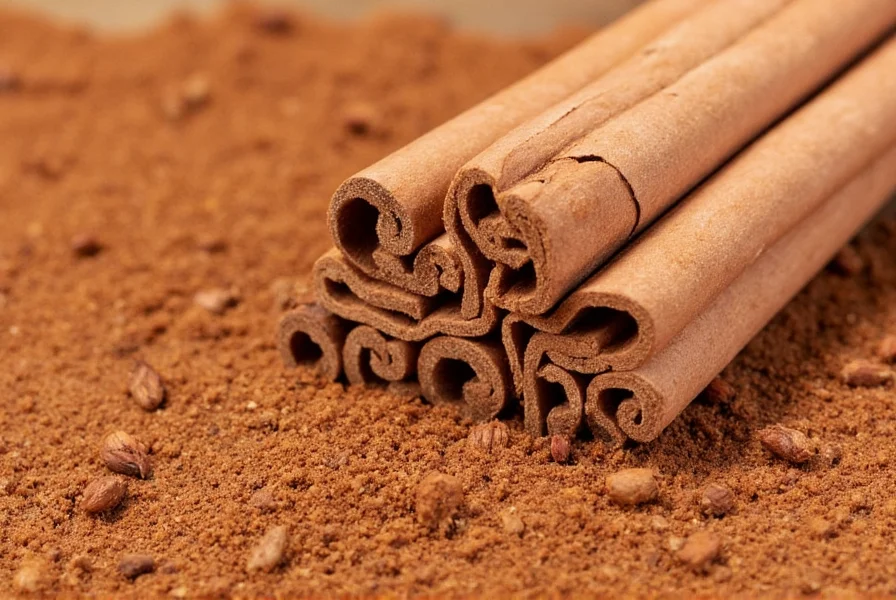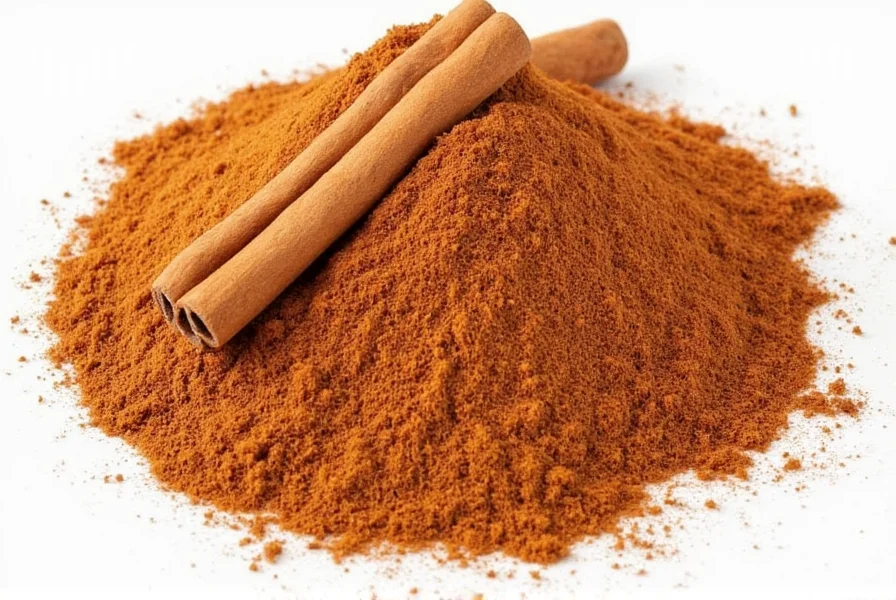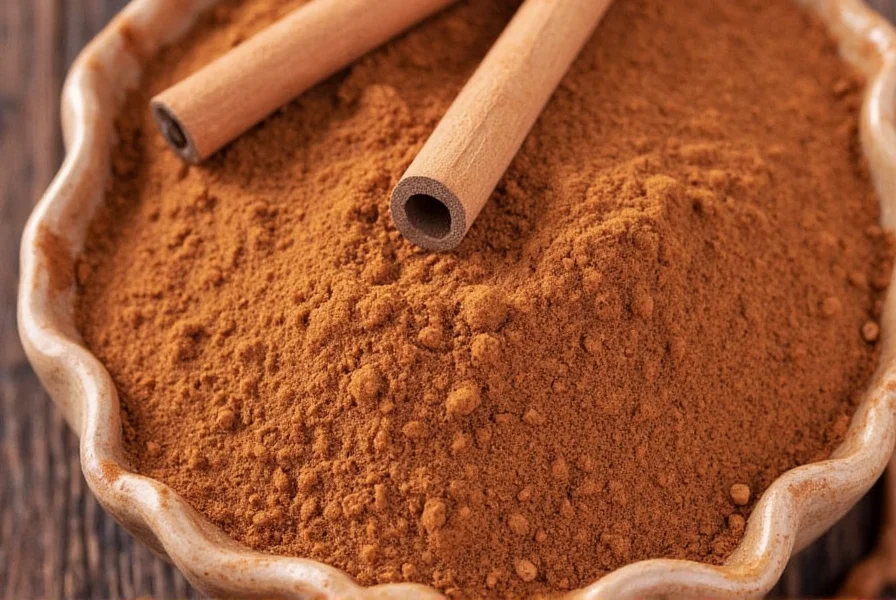Cinnamon has been treasured for thousands of years, not only as a culinary staple but also for its potential health-promoting properties. This ancient spice appears in historical records from Egypt, China, and the Mediterranean, where it was often more valuable than gold. Today, cinnamon remains one of the world's most popular spices, enhancing both sweet and savory dishes while offering potential wellness benefits supported by modern research.
Understanding Cinnamon Varieties
Not all cinnamon is created equal. The differences between types significantly impact flavor, culinary applications, and health considerations. Understanding these distinctions helps consumers make informed choices when selecting cinnamon spice for various purposes.
| Characteristic | Ceylon Cinnamon | Cassia Cinnamon |
|---|---|---|
| Origin | Sri Lanka, India, Madagascar | China, Indonesia, Vietnam |
| Appearance | Multiple thin, delicate layers forming a tight scroll | Thick, hard single-ply quills |
| Flavor Profile | Milder, sweeter, more complex with citrus notes | Stronger, hotter, more intense with higher oil content |
| Coumarin Content | Very low (approximately 0.004%) | Significantly higher (approximately 5-10%) |
| Common Names | True cinnamon, Mexican cinnamon, Soft cinnamon | Chinese cinnamon, Cassia, Hard cinnamon |
| Market Availability | Less common, typically more expensive | Most widely available,约占全球 cinnamon 销量的 90% |
Nutritional Profile and Evidence-Based Health Benefits
Cinnamon spice nutritional value includes essential minerals like manganese, calcium, and iron, along with dietary fiber and antioxidants. A single teaspoon (2.6g) of ground cinnamon contains approximately:
- 6 calories
- 2.1g carbohydrates
- 0.1g protein
- 0.1g fat
- 1.1g fiber
- 18% of the Daily Value for manganese
Research suggests several potential health benefits of cinnamon spice when consumed in moderation:
Blood sugar regulation: Multiple studies indicate cinnamon may improve insulin sensitivity and lower blood glucose levels, making it potentially beneficial for people with type 2 diabetes. The compound cinnamaldehyde appears to mimic insulin and enhance glucose uptake by cells.
Antioxidant properties: Cinnamon ranks among the most antioxidant-rich spices, with an ORAC (Oxygen Radical Absorbance Capacity) value significantly higher than many fruits and vegetables. These antioxidants help combat oxidative stress and inflammation.
Heart health support: Some research suggests cinnamon may help reduce triglycerides, LDL cholesterol, and blood pressure—all risk factors for heart disease. The spice's anti-inflammatory effects may also contribute to cardiovascular protection.
Antimicrobial effects: Cinnamon essential oil demonstrates potent activity against various bacteria, fungi, and yeasts, explaining its historical use as a food preservative.

Culinary Applications of Cinnamon Spice
Cinnamon spice uses in cooking extend far beyond traditional sweet applications. This versatile spice enhances both sweet and savory dishes across numerous culinary traditions worldwide.
Sweet preparations: Cinnamon naturally complements fruits (especially apples, pears, and berries), dairy products, and baked goods. It's essential in classics like apple pie, snickerdoodles, and churros. When using cinnamon in baking, add it toward the end of mixing to preserve its volatile oils and maximize flavor impact.
Savory dishes: In Middle Eastern, North African, and Indian cuisines, cinnamon appears in meat dishes, rice preparations, and vegetable stews. It pairs particularly well with lamb, beef, carrots, sweet potatoes, and squash. Try adding a small cinnamon stick to braising liquids or rice pilafs for subtle complexity.
Beverages: From chai tea to hot chocolate, cinnamon enhances warm beverages. For maximum flavor extraction in liquids, use cinnamon sticks rather than ground cinnamon, as the whole spice releases flavors more gradually.
Spice combinations: Cinnamon works harmoniously with other spices. Classic pairings include:
- Cloves and nutmeg for holiday baking
- Cumin and coriander in Moroccan tagines
- Ginger and cardamom in chai blends
- Allspice and star anise in mulled wines
Selecting and Storing Cinnamon Properly
How to use cinnamon spice effectively begins with proper selection and storage. Follow these guidelines to maximize freshness and flavor:
Buying considerations:
- For culinary versatility and lower coumarin content, seek Ceylon cinnamon when possible
- Check for freshness by smelling the spice—it should have a strong, sweet aroma
- Purchase from reputable sources that specify the cinnamon variety
- Buy whole cinnamon sticks when possible, as they retain flavor longer than ground spice
Storage recommendations:
- Store in airtight containers away from light, heat, and moisture
- Ground cinnamon retains optimal flavor for 6-12 months; sticks last 1-2 years
- Consider refrigerating cinnamon in humid climates to prevent moisture absorption
- Freeze cinnamon sticks for long-term storage without significant flavor loss

Safety Considerations and Potential Side Effects
While cinnamon spice side effects are rare when consumed in culinary amounts, certain considerations apply:
Coumarin content: Cassia cinnamon contains significantly higher levels of coumarin than Ceylon varieties. The European Food Safety Authority recommends a maximum daily intake of 0.1 mg of coumarin per kilogram of body weight. For a 60 kg adult, this equals approximately 1 teaspoon of Cassia cinnamon daily. Those with liver conditions should exercise particular caution.
Allergic reactions: Though uncommon, some individuals may experience oral allergy syndrome or skin irritation from cinnamon exposure. Cinnamon oil can cause skin irritation when applied topically without proper dilution.
Medication interactions: Cinnamon may interact with certain medications, particularly those affecting blood sugar or liver metabolism. Consult with a healthcare provider before consuming cinnamon in medicinal amounts if taking prescription medications.
Pregnancy considerations: Culinary amounts of cinnamon are generally considered safe during pregnancy, but medicinal doses should be avoided without medical supervision.
Conclusion: Maximizing Cinnamon's Potential
Cinnamon spice represents one of nature's most versatile flavoring agents with potential wellness benefits. By understanding the differences between cinnamon varieties, particularly Ceylon vs Cassia cinnamon, consumers can make informed choices that balance flavor preferences with health considerations. Whether enhancing morning oatmeal, creating complex savory dishes, or exploring potential health applications, cinnamon remains a kitchen essential worth understanding deeply. When selecting cinnamon spice uses in cooking, remember that quality, freshness, and appropriate variety selection significantly impact both flavor outcomes and potential health benefits.
Frequently Asked Questions
What's the difference between Ceylon and Cassia cinnamon?
Ceylon cinnamon (Cinnamomum verum) has multiple thin layers forming a delicate scroll, offers a milder, sweeter flavor, and contains very low levels of coumarin. Cassia cinnamon (Cinnamomum cassia) features thick, hard single-ply quills, has a stronger, more intense flavor, and contains significantly higher coumarin levels. Ceylon is often called 'true cinnamon' and is typically more expensive, while Cassia accounts for about 90% of cinnamon sold globally.
How much cinnamon can I safely consume daily?
For Cassia cinnamon, which contains higher coumarin levels, the European Food Safety Authority recommends no more than 0.1 mg of coumarin per kilogram of body weight daily. For a 60 kg adult, this equals approximately 1 teaspoon of Cassia cinnamon. Ceylon cinnamon contains much lower coumarin levels, so larger amounts are generally safe. Those with liver conditions should consult a healthcare provider before regular cinnamon consumption.
Does cinnamon really help regulate blood sugar?
Multiple studies suggest cinnamon may improve insulin sensitivity and lower blood glucose levels, particularly for people with type 2 diabetes. The compound cinnamaldehyde appears to mimic insulin and enhance glucose uptake by cells. However, cinnamon should complement rather than replace diabetes medications, and individuals with blood sugar concerns should consult their healthcare provider before using cinnamon as a therapeutic agent.
How should I store cinnamon to maintain freshness?
Store cinnamon in airtight containers away from light, heat, and moisture. Ground cinnamon retains optimal flavor for 6-12 months, while cinnamon sticks last 1-2 years. For best results, purchase whole cinnamon sticks and grind them as needed. In humid climates, consider refrigerating cinnamon to prevent moisture absorption, and freeze cinnamon sticks for long-term storage without significant flavor loss.
What are the best culinary uses for different cinnamon varieties?
Ceylon cinnamon's milder, sweeter flavor works well in delicate applications like custards, fruit dishes, and beverages where you want subtle spice notes. Cassia cinnamon's stronger flavor stands up well in robust applications like baked goods, spice cakes, and savory dishes such as Moroccan tagines or Indian curries. For most baking applications, Cassia provides the familiar 'cinnamon' flavor people expect, while Ceylon shines in applications where a more nuanced spice profile is desired.











 浙公网安备
33010002000092号
浙公网安备
33010002000092号 浙B2-20120091-4
浙B2-20120091-4